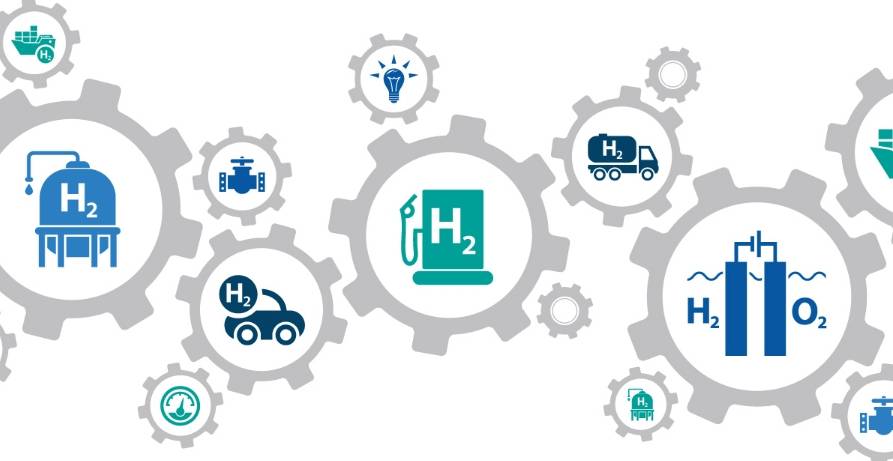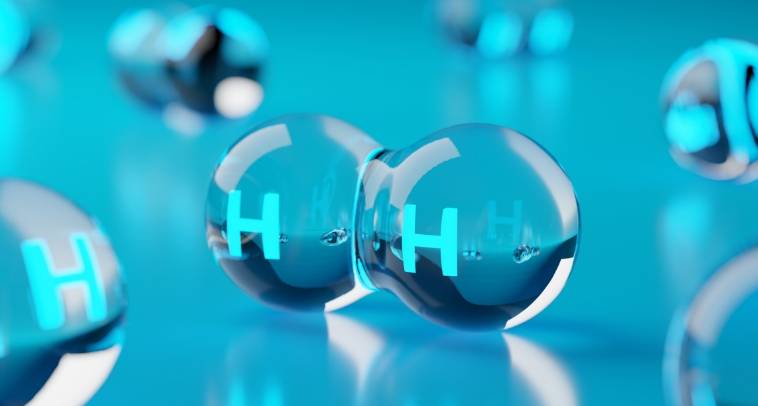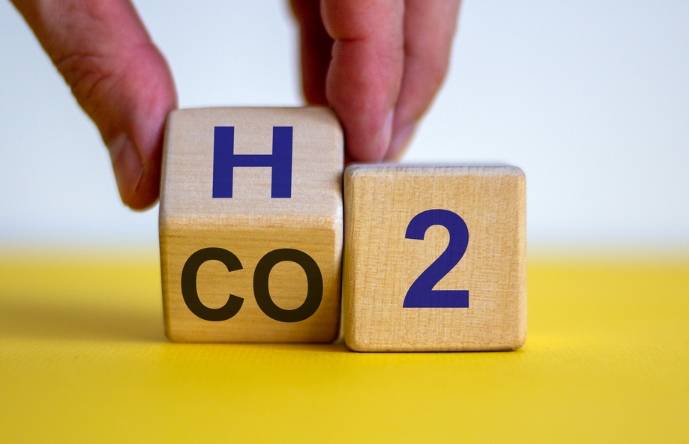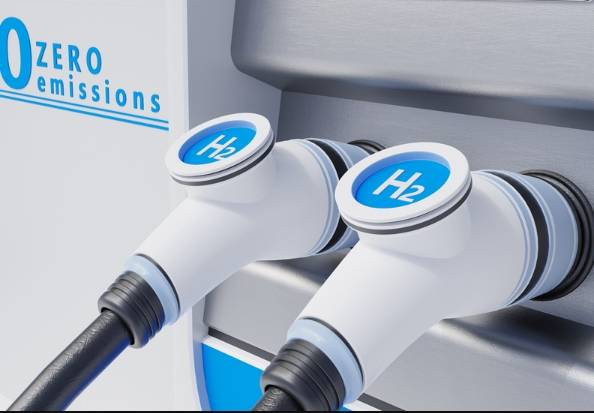

Anne-Sophie Corbeau, a natural gas and hydrogen researcher, works at the Center on Global Energy Policy at Columbia University’s School of International and Public Affairs in the United States. Previously, she served as the head of gas analysis and a Senior Leader at BP in Paris, where she provided guidance to the management team on gas market developments and long-term price assumptions. Additionally, as part of the Economic and Energy Insights team, she spearheaded energy outlook analysis on gas, industrial, nuclear, and hydrogen.
As a member of BP France’s Comex, Anne-Sophie Corbeau also served in various capacities. Prior to joining BP, she was a research fellow at KAPSARC (King Abdullah Petroleum Studies and Research Center) in Riyadh, where she established and developed the natural gas program. Anne-Sophie has also worked for the International Energy Agency (IEA), where she managed research on global gas markets, and for IHS CERA.
Anne-Sophie began her career as an engineer specializing in fuel cells and hydrogen at Peugeot and Debis Systemhaus. She is a graduate of Ecole Centrale Paris and the University of Stuttgart.
How is the hydrogen economy developing in the United States today?
The United States is a significant hydrogen market, accounting for over 10% of global hydrogen demand, which amounted to approximately ten million tonnes in 2021. The refining sector (55%) and the production of ammonia and methanol (35%) are the primary consumers, as in most other countries. Production operations are primarily concentrated in the Gulf Coast, the North East, and, to a lesser degree, California, which is particularly interested in producing hydrogen for transportation.
It is noteworthy that fuel cell technologies in the United States have a strong foundation, with a backup power generation capacity of 500 MW already installed, more than 80 city buses, 50,000 forklifts, and roughly 13,000 fuel cell electric vehicles in use, as well as approximately 50 charging stations. The country also boasts 620 MW of electrolyzer production capacity.
What are the major measures taken under the Biden-Harris administration in favor of hydrogen since 2021?
The United States has passed multiple legislative measures to promote hydrogen development and realign with the Paris agreements, which have three primary objectives:
- Decrease greenhouse gas emissions by 50-52% by 2030 compared to 2005 levels (with only a 17% reduction achieved in 2020).
- Decarbonize the electricity sector by 2035.
- Attain climate neutrality by 2050.
In June 2021, the Department of Energy initiated the Hydrogen Energy Earthshot, which has three main objectives encapsulated by a 1-1-1 formula: to attain a production cost of one dollar per kilogram of hydrogen from renewable energy within ten years, with an interim goal of two dollars per kilogram by 2026.
The Biden-Harris administration promptly introduced another significant endeavor, the Infrastructure Investment and Jobs Act (also known as the Bipartisan Infrastructure Law). This legislation, which was enacted in November 2021, designates $9.5 billion in public funding for hydrogen, with $8 billion designated for the Department of Energy to create regional carbon-free hydrogen hubs (Regional Clean Hydrogen hubs). This legislation is critical since the Department of Energy began actively developing programs for these hubs and establishing decarbonized hydrogen standards.
Later on, in August 2022, the US administration signed the Inflation Reduction Act, which has garnered significant attention worldwide due to its support for the development of decarbonized technologies in the United States, particularly hydrogen production.
Finally, in September 2022, the Department of Energy issued a preliminary version of the US Hydrogen Strategy, which aims to produce 10 million tons per year of decarbonized hydrogen by 2030, 20 million tonnes per year by 2040, and 50 million tonnes per year by 2050. This strategy is expected to be revised every three years.

What are the main features of the US hydrogen strategy?
The hydrogen strategy of the United States is built on three pillars.
- The first pillar concerns the targeted use of hydrogen in sectors like transportation and industry, where it will have the most significant impact on decarbonization efforts.
- The second pillar focuses on reducing the cost of hydrogen through the development of related industries, including the production of electrolyzers and fuel cells.
- The third pillar is the creation of regional hydrogen hubs, which includes the social component of the American strategy, aimed at creating well-paying jobs in a national employment initiative. It is vital to highlight the importance of this aspect.
How is the American hydrogen strategy radically different from that of the European Union?
The approach taken by the American hydrogen strategy differs significantly from that of Europe. While Europe utilizes a stick approach, such as implementing carbon taxes, the United States utilizes a carrot approach, such as offering tax credits. The focus in the United States is primarily on carbon intensity, and the official documents do not place a significant emphasis on the color of hydrogen. The American approach is technology-neutral, and includes the production of hydrogen from various sources, such as solar, wind, nuclear, natural gas with carbon storage, as well as biomass or waste. Ultimately, the focus is on what can be produced, the associated cost, and the carbon intensity.
To implement its technology-agnostic approach, the Department of Energy released a draft guidance in September 2022 for a Clean Hydrogen Production Standard, which will aid in funding decisions. This standard was mandated by the 2021 Bipartisan Infrastructure Law. The proposed target is 4.0 kgCO2e/kg of hydrogen for the full production life cycle, including upstream and downstream emissions, such as those from natural gas. The goal is to ensure all emissions associated with hydrogen production are accounted for.
The Inflation Reduction Act is a critical component of the United States’ hydrogen strategy and is seen as a significant advantage in the global race for hydrogen. What is the origin of this text, which is considered so important?
The Inflation Reduction Act emerged from the failed Build Back Better (BBB) investment program, which was initially proposed as a massive $2 trillion program. The House of Representatives, which had a Democratic majority, and the evenly split Senate were working on the BBB for the first two years of the Biden-Harris presidency. However, Democratic Senator Joe Manchin, who leans to the right of his party, opposed the BBB due to concerns about the impact on the national debt. In February 2022, he published a column in the Washington Post calling for debt reduction. Manchin’s opposition prevented the passage of the BBB, which was subsequently revised into the Inflation Reduction Act. The IRA includes some of the original expenditures, such as $369 billion for energy and climate change, and revenue measures such as a minimum tax rate for large corporations, drug price reform, and improved tax collection. The IRA aims to reduce the national debt, which was a key concern of Senator Manchin. The passage of the IRA was uncertain from the end of 2021 until its adoption in the Senate in August 2022 and then in the House of Representatives.

How could the IRA give the American hydrogen industry a decisive advantage over Europe?
Regarding hydrogen, the Inflation Reduction Act includes various provisions that support its development, although the most widely recognized is the three-dollar subsidy per kilogram of carbon-free hydrogen. However, this important figure is not explicitly stated in the text of the law. Instead, multiple articles in the IRA are dedicated to hydrogen and several support mechanisms are established, including the production tax credit (Article 45V), investment tax credit (Article 48), and indirectly, the carbon capture and sequestration tax credit (Article 45Q).
How do these different hydrogen support mechanisms planned by the IRA work?
The production tax credits mechanism (article 45V) does not explicitly mention the $3 per kilogram subsidy for carbon-free hydrogen. Instead, it provides a base subsidy of sixty cents per kilogram of hydrogen produced with a carbon intensity between 0 and 0.45 kg CO2e over the molecule’s entire lifecycle for ten years. However, the base amount can be multiplied by five, resulting in $3, if the producer meets additional criteria, such as providing high wages and apprenticeships. This five-fold bonus aligns with the social pillar, the third crucial aspect of the United States’ hydrogen strategy.
The second mechanism to support the hydrogen industry, as outlined in Article 48, is the investment tax credit. Unlike the production tax credit, which is calculated based on the number of kilograms of hydrogen produced, the investment tax credit is based on the cost of capital. Companies must decide which mechanism is the better option for their business model. A graph provided by the American research institute, Resources for the Future, illustrates the difference between the two mechanisms based on the cost of capital and the load factor. The graph indicates that in most cases, the production tax credit is the more advantageous mechanism when the utilization rate is high enough. This is often the case for hydrogen production from natural gas with carbon storage, as well as for hydrogen production via water electrolysis.
How does the IRA support the production of fossil hydrogen with carbon capture, knowing that the United States is the world’s largest producer of fossil gas?
The Inflation Reduction Act contains a specific mechanism aimed at carbon capture and sequestration (section 45Q), which is not new and has existed in the US Federal Tax Code since 2008. However, it was improved in 2018 to provide a public subsidy of $50 per ton of carbon dioxide captured and stored, and $35 per ton if the carbon was captured and reused. This mechanism had usage constraints, where power plants emitting over 500,000 tons of CO2 per year had to capture at least 500,000 tons per year, limiting the number of eligible entities. The IRA increases the amount of state aid to $85 per ton when the carbon is stored, $60 when reused, and even higher for new carbon capture technologies. The minimum threshold for the amount of CO2 captured has been lowered to make it more accessible. Hydrogen producers from natural gas with carbon capture have an additional option to choose between these mechanisms.
Can these different mechanisms be combined by manufacturers?
The production tax credit mechanism for hydrogen (Article 45V) and the carbon capture and sequestration tax credit mechanism (Article 45Q) cannot be combined. However, developers of renewable hydrogen projects can combine the hydrogen production tax credit (Article 45V) with the tax credit for producing electricity from renewable sources, which provides significant support for this type of production.

What is the benefit of these tax credit mechanisms for all organizations that do not pay taxes?
The Inflation Reduction Act introduces an additional aspect of support for the hydrogen industry. The various support mechanisms provided by the act take the form of tax credits, which may not be applicable to certain entities such as cities, local communities, and tribes. To address this issue, the IRA proposes Direct Pay, whereby the administration will directly pay these entities the tax credit amount for a period of 10 years. However, for other entities, this facility is only available for the first five years. Beyond this period, a credit market could be established to facilitate the transfer of these credits to taxable entities, likely at a discounted rate.
The amount of IRA tax credits depends on the carbon intensity of the hydrogen produced by the manufacturer. How is this carbon intensity calculated?
The European Union is currently engaged in a debate over how to calculate emissions for different types of hydrogen, while the American approach is more straightforward. The Inflation Reduction Act relies on the Greenhouse Gases, Regulated Emissions, and Energy Use in Transportation (GREET) model, which was developed by the Argonne National Laboratory. The IRA allows for updates to the GREET model over time, including potentially changing the calculation of methane emissions from a global warming factor over a hundred years to twenty years, which would increase its warming power. Unlike in Europe, the Treasury Department, led by Janet Yellen, and the tax administration (Internal Revenue Service) are responsible for developing the GREET model in the US. While there may be consultations on how to frame the model for calculating hydrogen emissions, for now, the GREET model serves as a clear and universally understood foundation.
Beyond the IRA, where is the United States with the creation of the hydrogen pools provided for by the Infrastructure Investment and Jobs Act?
The Department of Energy has been allocated $7 billion to establish six to ten hydrogen hubs in different regions. In September 2022, the department released a substantial document called the Regional Clean Hydrogen Hubs Funding Opportunity Announcement (FOA). Applicants seeking funding from the department were required to submit a concept paper before November 7, 2022. As of early 2023, there are still thirty-three applications under consideration. The projects that pass this initial stage must provide the department with final documentation by April 7, 2023. After that, they will undergo a rigorous selection and interview process that will occur during the summer. The results are expected to be announced in the fall.
How are the social criteria, which constitute the third component of the American hydrogen strategy, crucial in the establishment of these regional hydrogen pools?
The Department of Energy has established multiple criteria that must be met by the regional hydrogen pools, including diversity in hydrogen sources and end use, as well as geographical diversity. In addition, the social impact of the projects will also be assessed, taking into account factors such as job creation, energy security, diversity, equity, inclusion, and accessibility. The Department of Energy will not solely evaluate the monetary impact of the applications, but will also consider the societal benefits to disadvantaged communities, in accordance with the executive order signed by President Joe Biden in June 2021. This initiative is also part of the Justice40 Initiative, which aims to ensure that 40% of the benefits from federal investments go to disadvantaged communities. An online tool is available to identify areas in the United States that are disadvantaged based on criteria such as exposure to fine particles, fire and flood risk, health and income inequality. These criteria are extremely important, yet they are not discussed enough in the European press.





